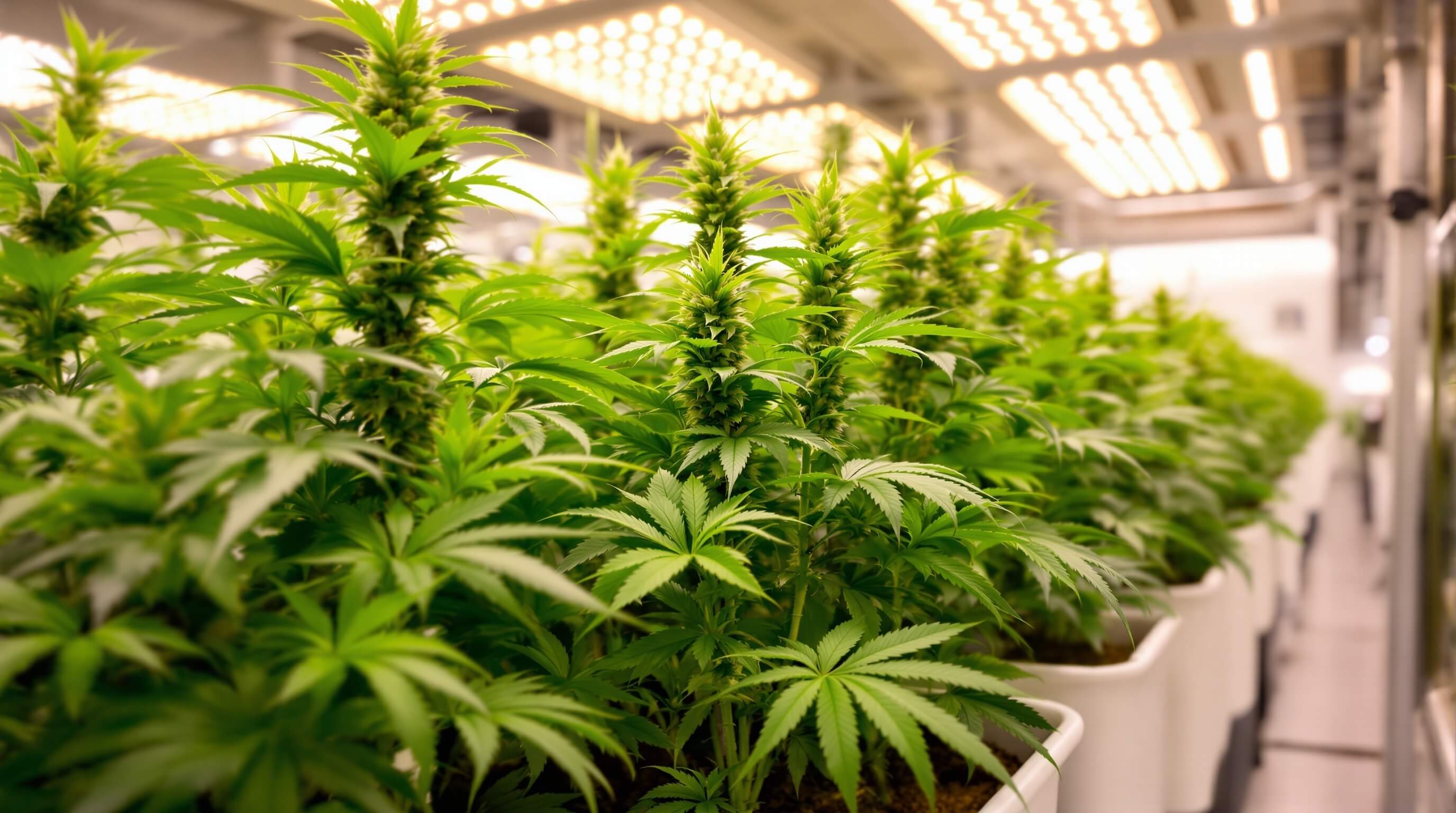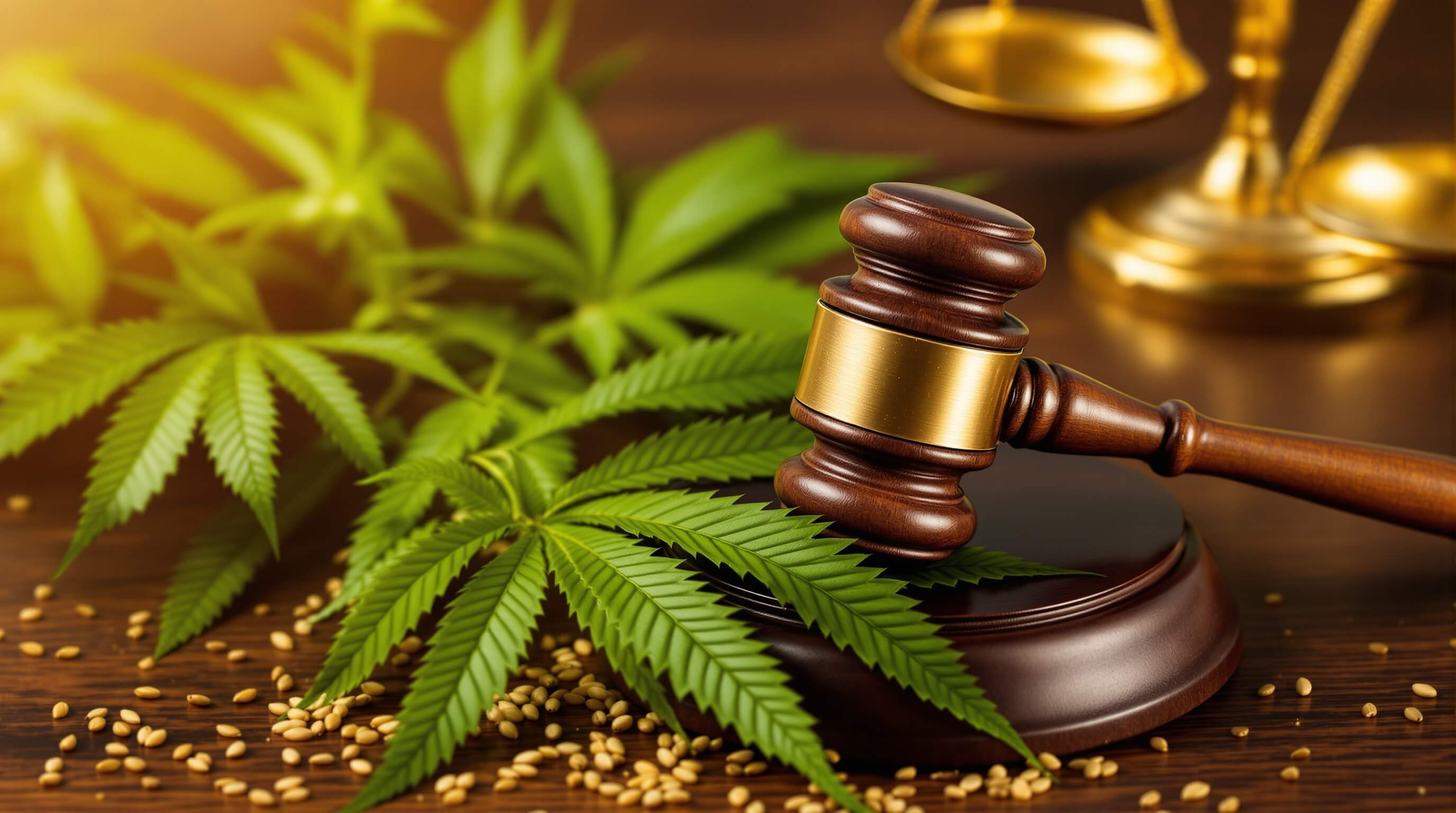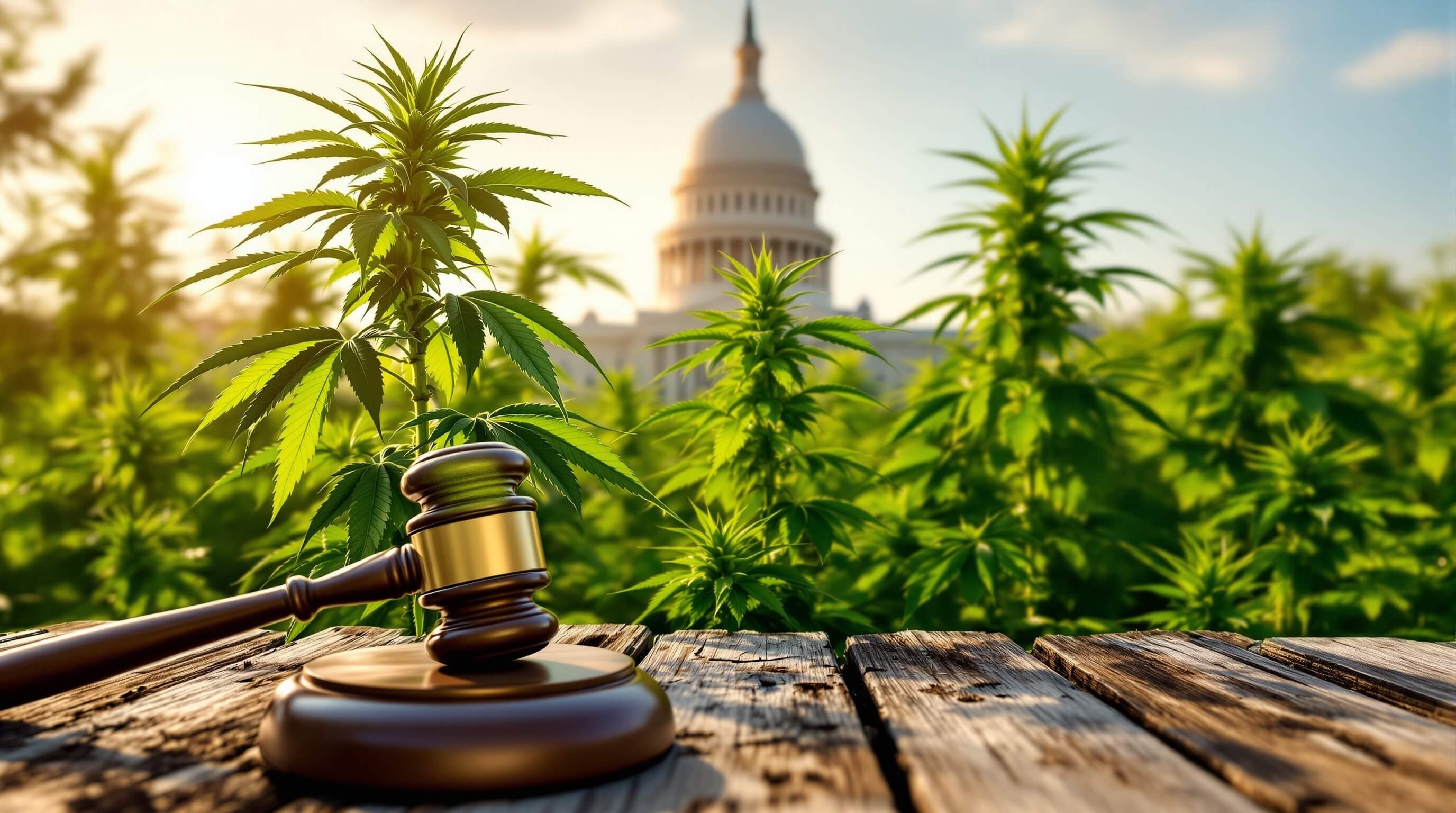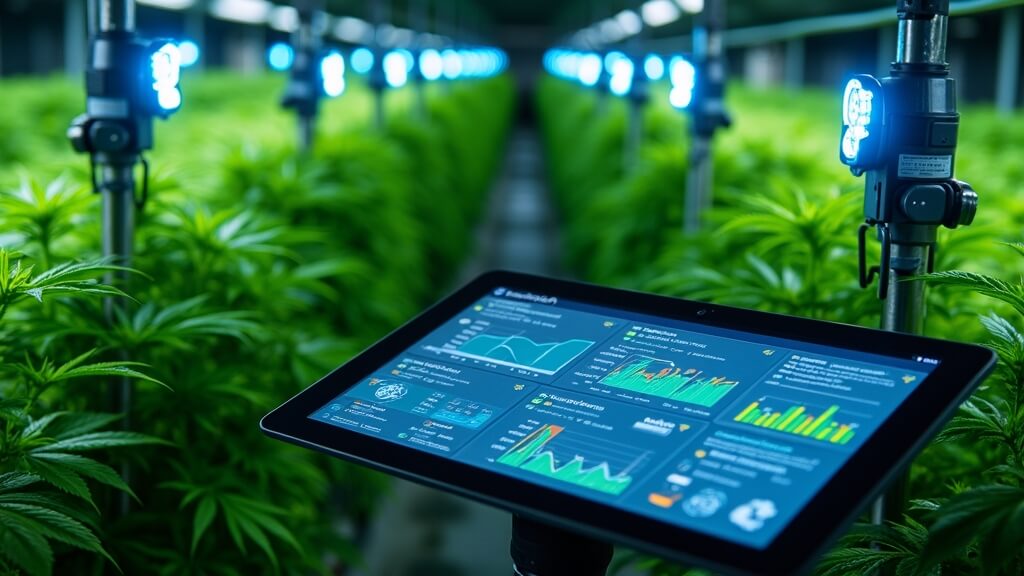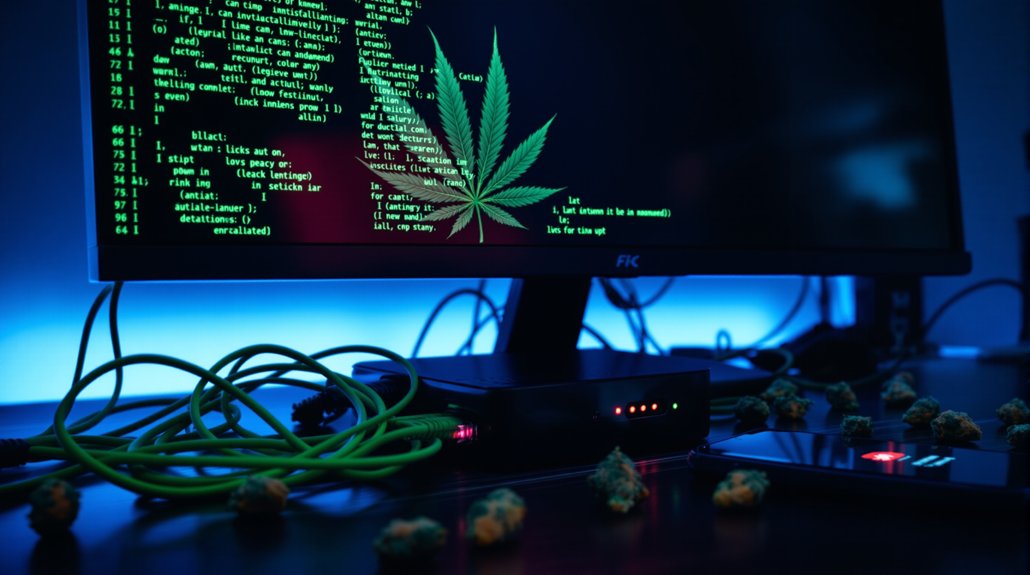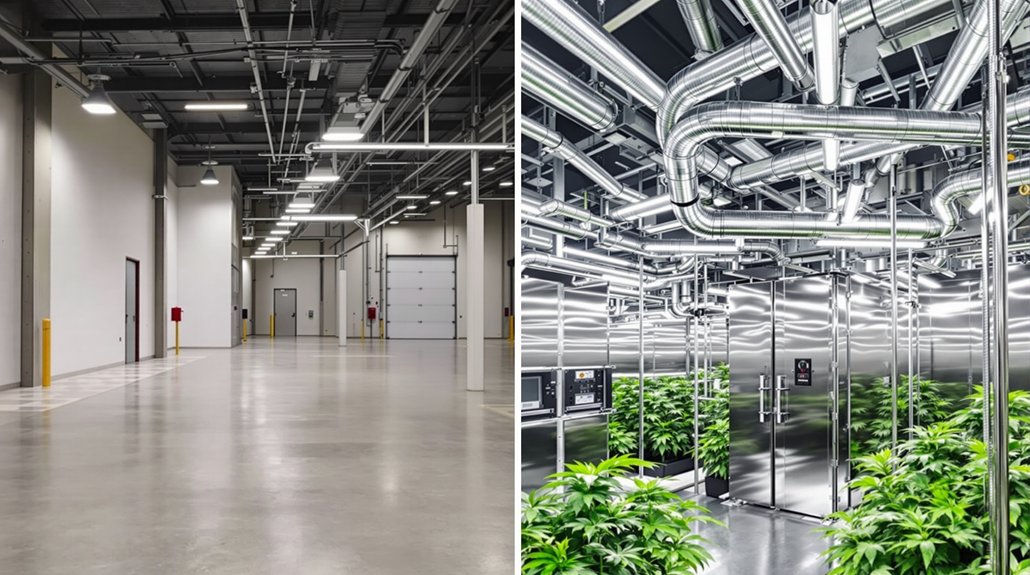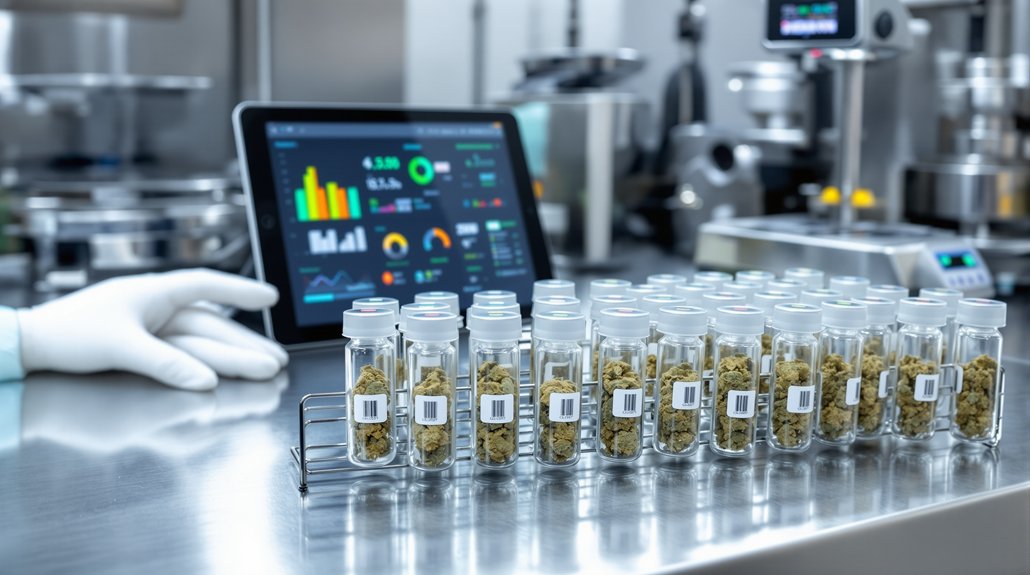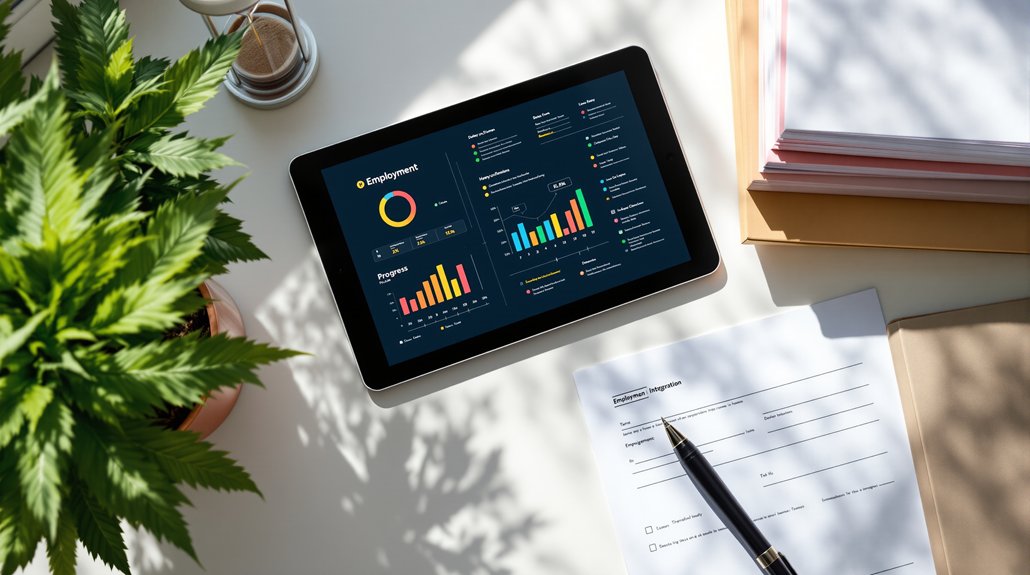Pioneering New Technologies in Cultivation
Cannabis cultivation has reached an inflection point. While consumer demand continues climbing toward a projected $45-50 billion U.S. market, cultivators face a perfect storm of challenges that separate thriving operations from those struggling to survive. Wholesale prices have dropped approximately 8% nationally as oversupply floods mature markets, regulatory complexity continues mounting across state lines, and operational costs strain already-thin margins.
Yet within this pressure-cooker environment, a new generation of cultivation businesses is emerging – operators who understand that survival depends on transforming cannabis growing from art to science. These forward-thinking cultivators are leveraging innovations from traditional agriculture, implementing data-driven decision making, and building sustainable operations that can weather market volatility while maintaining compliance across an increasingly complex regulatory landscape.
The Reality Cannabis Operators Face Today
The cultivation sector is experiencing rapid maturation, but this evolution brings both unprecedented opportunities and existential risks. Market saturation has created what industry insiders call the “survival squeeze,” a scenario where small-to-medium operators must compete not only with established large-scale competitors but also with well-capitalized entrants from alcohol and tobacco industries.
Simultaneously, the regulatory environment continues fragmenting. State-by-state compliance requirements create operational complexity that can turn profitable grows into costly compliance nightmares. Environmental regulations are tightening, water usage is under increased scrutiny, and a single misstep with pesticide residue or permit violations can result in crop loss or facility shutdown.
Climate challenges compound these pressures. Energy costs continue ri
sing while severe weather events like wildfires and heat waves threaten even indoor and greenhouse operations. Emerging biological threats like Hop Latent Viroid (HLVd) can devastate yields, while traditional pests adapt to indoor growing environments.
Why Innovation Becomes Essential, Not Optional
Smart operators recognize that traditional cultivation methods won’t sustain profitable operations in this new landscape. The path forward requires embracing technological innovation, operational efficiency, and strategic differentiation while knowing which investments deliver real ROI versus expensive distractions.
Automation and precision climate control are reducing operational costs while improving consistency. AI-driven cultivation software now predicts yields and optimizes inputs, with early adopters reporting profitability improvements of 15-20%. LED lighting adoption has enabled energy reductions of 30-40%, while advanced breeding techniques are producing uniform, disease-resistant genetics that command premium pricing.
Successful cultivators are also leveraging sustainability initiatives not just for environmental benefits, but as competitive advantages. Resource-efficient operations reduce costs while positioning businesses for stricter environmental regulations and increasingly conscious consumer preferences.
Strategic Priorities for Modern Cannabis Cultivation
This comprehensive guide examines eight critical areas, from advanced genetics and breeding techniques that enable product differentiation, to automation technologies that scale operations without proportionally scaling labor costs, to compliance strategies that turn regulatory complexity into competitive moats.
We’ll explore how leading operators are navigating irrigation and wa
ter management under tightening environmental regulations, implementing integrated pest management systems that maintain compliance while protecting yields, and leveraging data analytics to optimize everything from environmental controls to harvest timing.
Sustainability initiatives, climate adaptation strategies, and policy compliance frameworks round out the operational priorities, while our forward-looking analysis identifies emerging opportunities that well-positioned cultivators can capitalize on as the industry continues evolving.
Cannabis cultivation in 2025 demands more than growing expertise – it requires business acumen, technological fluency, and strategic thinking. The operators who master this combination won’t just survive the current market pressures; they’ll establish the foundation for long-term profitability and growth in an increasingly sophisticated industry.
Seeds & Genetics: Building Your Cultivation Foundation
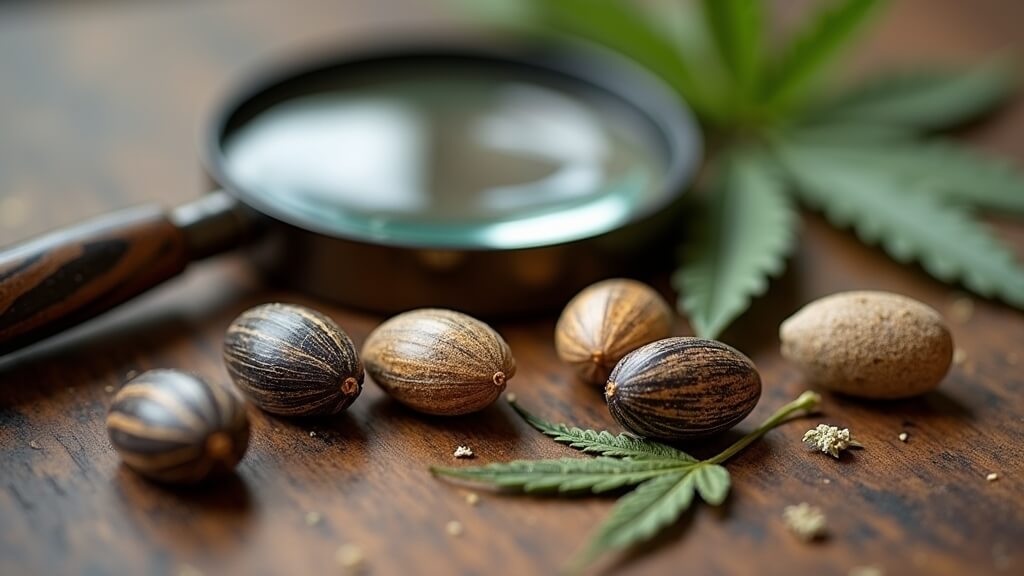
The genetics you choose determine every aspect of your operation’s success, from yield predictability and pest resistance to product differentiation and brand consistency. As cannabis cultivation matures into a sophisticated agricultural business, operators face critical decisions about genetic sourcing that directly impact profitability, scalability, and long-term competitive positioning.
The F1 Revolution: Why Hybrid Seeds Are Changing Commercial Cultivation
First-generation hybrid (F1) cannabis seeds represent the most significant advancement in commercial cultivation genetics since the industry’s early days. Unlike traditional cannabis breeding, F1 hybrids deliver the uniformity and predictability that serious operations require to scale efficiently.
F1 hybrids exhibit “hybrid vigor” producing higher yields, stronger pest resistance, and remarkably uniform growth patterns across entire crops. This consistency addresses one of cannabis cultivation’s longest-standing operational challenges: plant-to-plant variability that complicates everything from facility planning to harvest scheduling.
Companies like Royal Queen Seeds pioneered F1 cannabis hybrids in 2016, but adoption has accelerated rapidly as cultivators recognize the operational advantages. Phylos Bioscience reports that once operators understand F1 uniformity benefits, demand increases dramatically. For commercial cultivators, this uniformity translates to predictable labor requirements, consistent environmental control needs, and standardized harvest timing, operational efficiencies that directly impact profitability.
The seed-grown advantage extends beyond uniformity. F1 seeds produce plants free from the accumulated pathogen loads that plague clone mother plants, offering a fresh genetic start that can prevent costly disease outbreaks. Industry experts predict F1 seeds could replace clones as the dominant cultivation method within a decade, though adoption varies by operation size and market focus.
Strategic Genetics Decisions: Clones vs. Seeds vs. Hybrids
Your genetic sourcing strategy should align with your business model and operational priorities. Each approach offers distinct advantages and trade-offs that savvy operators must evaluate.
Clonal propagation remains the gold standard for consistency and brand continuity. Top cultivators rely on elite clone-only strains to reproduce beloved terpene profiles that drive consumer loyalty. Clones ensure genetic uniformity batch after batch, which proves essential for businesses building brand recognition around specific strain characteristics.
However, cloning carries significant risks that forward-thinking operators must consider. Clone libraries can harbor latent diseases like Hop Latent Viroid (HLVd), which can devastate yields. Mother plant maintenance requires dedicated space, labor, and resources that impact operational efficiency. Most critically, clone dependency limits genetic progress and innovation potential.
Hybrid breeding offers the opposite trade-off: innovation potential and genetic diversity at the cost of some predictability. Cross-breeding diverse parent lines creates unique cannabinoid profiles, novel terpene combinations, and traits that can’t be achieved through cloning alone. For operators focused on product differentiation and premium market positioning, hybrid breeding provides the genetic foundation for standout products.
F1 hybrid seeds represent the best of both approaches delivering clone-like consistency with the innovation potential and pathogen-free advantages of seed propagation. For commercial operations prioritizing scalability and operational efficiency, F1 hybrids increasingly represent the optimal genetic strategy.
Emerging Technologies and Competitive Implications
Advanced breeding technologies are reshaping what’s possible in cannabis genetics, creating both opportunities and competitive pressures for cultivation businesses.
Gene editing tools like CRISPR offer unprecedented precision in developing desired traits potentially enabling cannabis varieties with novel terpenes, enhanced pathogen resistance, or optimized cannabinoid ratios that conventional breeding can’t achieve efficiently. While no companies are publicly deploying CRISPR in cannabis yet, the technology’s disruptive potential means operators should monitor developments closely.
Tissue culture and micropropagation enable disease-free genetic preservation and rapid scaling of elite genetics. These technologies allow operations to maintain genetic libraries indefinitely while producing certified clean plant material. Autoflowering genetics continue advancing, offering more flexible cultivation cycles that can improve facility utilization and cash flow timing.
For cultivation businesses, these technological advances create both opportunity and risk. Early adopters may gain significant competitive advantages through superior genetics, while operators relying on outdated approaches risk falling behind as the industry’s genetic sophistication increases.
Intellectual Property: Protecting Your Genetic Investments
As substantial capital flows into cannabis genetics, intellectual property protection has become a critical business consideration. The informal, open-source approach to strain development that characterized cannabis’s underground era is giving way to sophisticated IP strategies that operators must understand.
Plant patents protect specific varieties reproduced through cloning, though their scope remains narrow. Utility patents offer broader protection, potentially covering seeds, genetic markers, or breeding techniques that competitors cannot use without licensing. The USPTO has granted various cannabis-related patents, and legal precedents continue developing through early infringement cases.
Companies like Biotech Institute have pursued broad utility patents covering high-THC, high-CBD varieties with specific terpene profiles—patents that could impact how entire market segments develop. The Plant Variety Protection Act may provide another avenue for protecting sexually reproduced varieties, though regulatory clarity remains limited for high-THC cannabis.
For cultivation operators, these IP developments create both opportunities and risks. Licensing proprietary genetics can provide competitive advantages, but operators must carefully evaluate IP rights and potential infringement risks when selecting strains. Due diligence on genetic provenance becomes increasingly important as licensing frameworks mature and enforcement actions emerge.
Strategic Supplier Selection and Genetic Sourcing
Your genetics supplier strategy should balance reliability, innovation, and legal clarity to support long-term business success. Established seed banks like Dutch Passion and Royal Queen Seeds offer proven reliability, while newer U.S. companies like Humboldt Seed Co. and Ethos Genetics provide domestic sourcing and market-specific breeding.
Many companies have pivoted toward commercial F1 hybrid production, recognizing large-scale cultivators’ demand for professional-grade genetics that deliver predictable yields and stress resistance. Meanwhile, craft breeders continue developing unique polyhybrids that serve niche markets and premium positioning strategies.
Implementation Recommendations for Cannabis Operators
Successful genetic strategies require aligning your sourcing decisions with your business model, operational capabilities, and market positioning. Large-scale commercial operations benefit most from F1 hybrid uniformity and predictability, while craft cultivators may find competitive advantage through unique genetics and artisanal approaches.
Evaluate potential genetics suppliers based on their track record, IP clarity, and alignment with your operational needs. Establish clear protocols for genetic sourcing, including disease testing, legal compliance verification, and performance evaluation criteria.
Consider your intellectual property strategy early. Whether developing proprietary strains or licensing established genetics, understanding IP implications prevents costly legal issues while potentially creating valuable business assets.
The cannabis genetics landscape continues evolving rapidly, but one trend remains clear: operations that prioritize genetic strategy as a core business function, position themselves for sustainable competitive advantage in an increasingly sophisticated market.
Indoor & Greenhouse Technology: Infrastructure
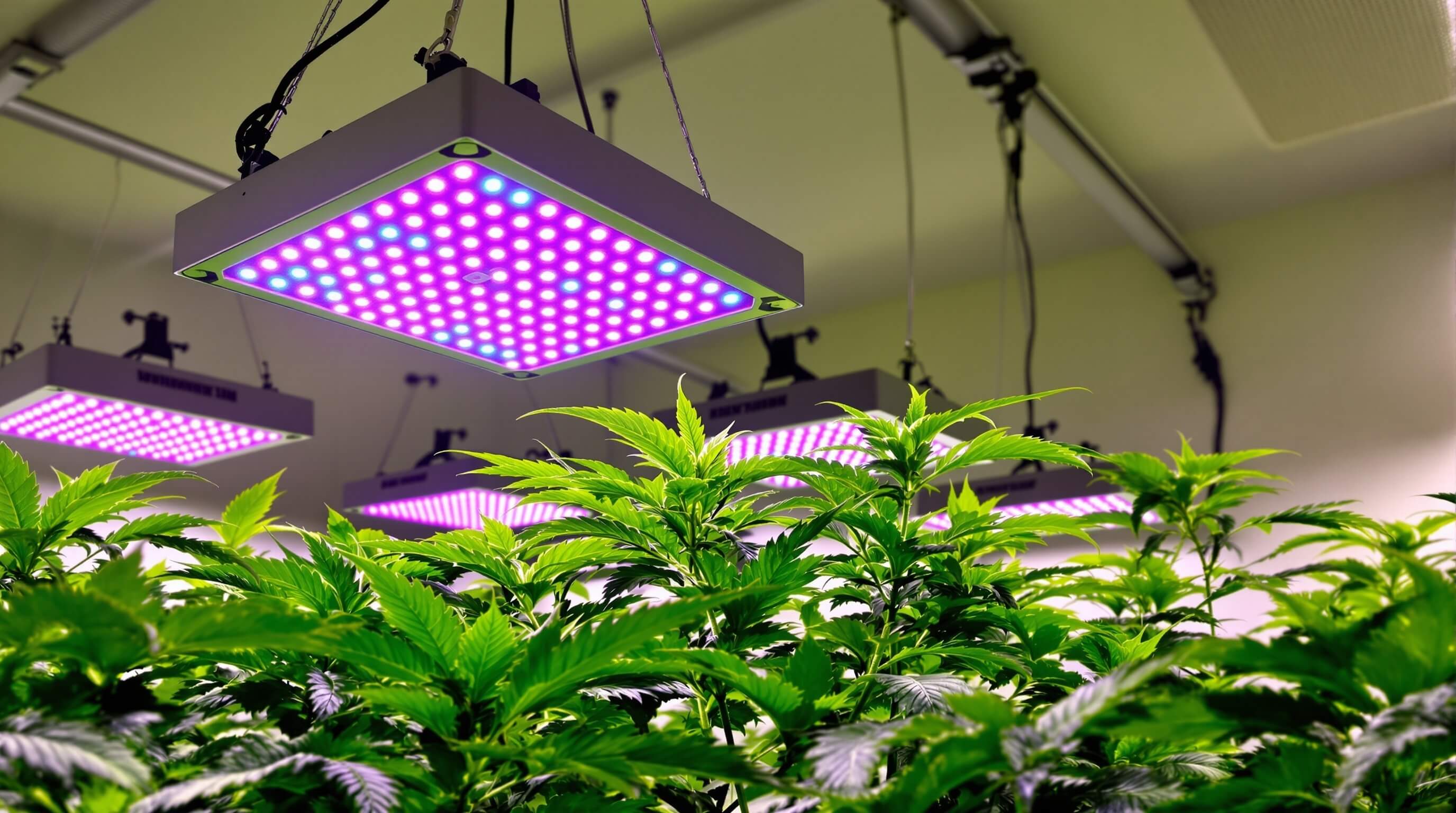
Technology infrastructure determines whether your cultivation operation thrives or struggles in today’s competitive market. With lighting consuming 50-70% of indoor facilities’ electricity and environmental control driving most remaining energy costs, strategic technology decisions directly impact your bottom line and operational sustainability.
Lighting and Environmental Control: The Foundation of Modern Operations
The industry’s rapid shift to LED lighting represents more than a trend. By late 2024, 77% of commercial growers use LED lighting for flowering, up from just 15% in 2016. This transformation delivers tangible business benefits: LED systems cut lighting energy consumption by 30-50% while maintaining or improving yields compared to legacy HPS systems.
Modern LED fixtures from companies like Fluence, Gavita, and Signify offer spectrum tuning capabilities that let operators optimize plant morphology and terpene production. Advanced techniques like undercanopy lighting prevent lower-tier “popcorn” buds by illuminating shaded areas, maximizing yield per square foot, critical in markets where facility efficiency determines profitability.
Environmental control technology has evolved equally dramatically. Today’s integrated HVAC systems maintain precise temperature, humidity, and CO₂ levels across distinct climate zones within single facilities. Vapor pressure deficit (VPD) optimization – balancing temperature and humidity for maximum plant transpiration, has become standard practice among sophisticated operators.
CO₂ enrichment to 800-1200 ppm (2-3 times atmospheric levels) can boost yields by approximately 30%, but requires sealed environments and robust monitoring systems. Leading facilities use automated CO₂ dosing integrated with climate control software, maintaining elevated levels only during lights-on periods when plants utilize the additional carbon.
Companies like Argus Controls and Priva provide cultivation-specific climate management systems that create distinct environmental zones for different strains or growth stages. These systems dynamically adjust fans, chillers, and dehumidifiers to maintain optimal conditions, with properly calibrated systems increasing yields by 20-30% while reducing energy waste.
Strategic Technology Investment and Facility Optimization
Technology upgrades require substantial capital investment, but the ROI calculations increasingly favor modernization. LED retrofits may cost millions upfront but generate utility rebates while reducing HVAC loads by 40% due to lower heat output. In competitive markets where wholesale prices continue declining, energy-efficient operations gain decisive cost advantages over legacy facilities.
Smart automation amplifies these benefits. Seventy-five percent of growers now use dimming and scheduling technology, while 91% employ automated environmental controls. These systems enable sophisticated strategies like reducing light intensity during early growth phases or optimizing HVAC during cooler periods, generating additional operational savings.
However, operators must navigate significant cost trade-offs. While HPS lights cost less initially than LEDs, and basic AC units cost less than integrated HVAC systems, regulatory pressure is mounting. States like Massachusetts now limit cultivators to 36 watts per square foot and reference efficiency standards that can bar non-compliant facilities. As wholesale prices compress margins, energy-inefficient operations face increasing economic pressure.
Greenhouse vs. Indoor Strategic Considerations: Leading operators increasingly adopt hybrid approaches that combine free sunlight with controlled environmental systems. High-tech greenhouses augmented with LED lighting and precise climate control can dramatically reduce electricity costs per pound while achieving quality comparable to indoor operations.
Greenhouse facilities require specialized dehumidification systems to manage nighttime humidity when ventilation is restricted, preventing condensation and mold issues. Advanced greenhouses now integrate dehumidifiers, fogging systems, and convertible-roof designs that optimize natural light use while maintaining environmental control.
Technology providers have responded with cultivation-specific solutions. Surna and InSpire design HVAC systems for cannabis’ high latent heat loads, while greenhouse specialists like Cravo offer retractable roof systems that blend natural sunlight with controlled conditions. Sensor integration platforms like Grodan’s e-Gro aggregate data across irrigation, climate, and growth systems, enabling data-driven optimization.
Implementation Strategy: Successful technology adoption requires systematic ROI evaluation and strategic planning. Calculate energy savings models comparing LED versus HPS systems, quantify yield gains from CO₂ supplementation, and assess labor savings from automation systems. Take advantage of utility rebates and vendor partnerships to offset upgrade costs.
In an oversupplied market where operational efficiency determines survival, staying ahead of the technology curve equals staying in business. The most successful operators design energy-optimized facilities from inception, incorporating water-cooled LED systems, high-efficiency dehumidifiers, and renewable energy integration.
Technology infrastructure isn’t just about growing better cannabis, it’s about building sustainable operations that can compete effectively as the industry matures and margins compress. The question isn’t whether to invest in modern cultivation technology, but how quickly you can implement systems that position your operation for long-term profitability.
Irrigation & Water Management: Smart Systems
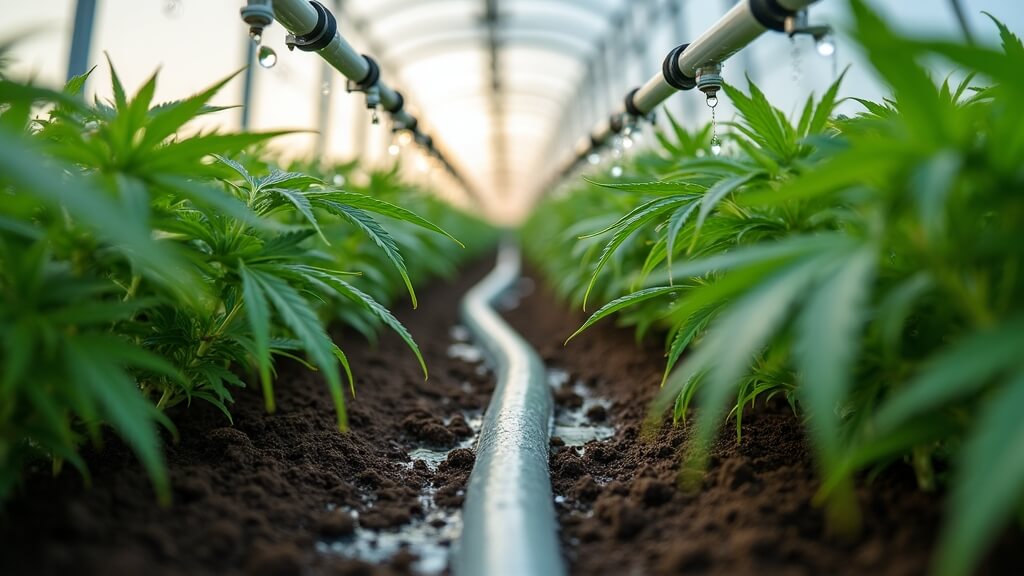
Water management has evolved from basic cultivation necessity to strategic operational advantage. As regulatory oversight tightens and resource costs increase, smart irrigation systems and water recycling technologies deliver both compliance benefits and significant cost savings that directly impact your bottom line.
Smart Irrigation Systems and Precision Technology
Modern cultivation operations rely on sensor-driven irrigation systems that optimize water delivery while preventing waste and runoff. Soil moisture sensors and load cell systems trigger watering at precise thresholds, ensuring plants receive ideal hydration without overwatering that wastes nutrients and creates regulatory liability.
Pulse irrigation, which delivers many small waterings rather than infrequent heavy applications, maximizes plant uptake efficiency while minimizing runoff. This approach requires tailoring irrigation protocols to specific substrates: rockwool hydroponic systems require different dosing strategies than coco coir containers, with optimal irrigation events typically representing just 1-5% of substrate volume.
Advanced fertigation controllers automatically adjust nutrient solutions and irrigation frequency based on real-time root-zone moisture and electrical conductivity data. These systems respond dynamically to environmental conditions, increasing watering frequency during hot, dry periods while preventing salt buildup that can damage plant health and yields.
Precision agriculture technologies enable operators to reduce water usage by 20-30% without yield loss through targeted monitoring and automated controls. Capacitance soil moisture sensors provide zone-specific data that eliminates guesswork, while automated shut-off valves and leak detection systems prevent costly waste from equipment failures.
For greenhouse and outdoor operations, weather station integration measuring solar radiation, rainfall, and evaporation rates automatically adjusts irrigation schedules. This precision approach mirrors techniques used successfully in traditional high-value crops, but cannabis’ high input costs make optimization even more critical for profitability.
Water Recycling, Compliance, and Strategic Cost Benefits
Closed-loop water systems represent both regulatory compliance strategy and significant cost reduction opportunity. Rather than discharging fertigation runoff and HVAC condensate, leading operations capture and reuse these water sources through sophisticated treatment and recycling systems.
HVAC condensate collection provides essentially distilled water that can be filtered and integrated into new nutrient solutions, substantially reducing fresh water consumption. Advanced facilities employ comprehensive runoff treatment including settling tanks, UV or ozone disinfection, and reverse osmosis systems to strip excess salts before re-nutrifying and reusing irrigation water.
Hydroponic systems that recirculate nutrients demonstrate superior water efficiency compared to traditional pot-based drip irrigation while often producing higher yields. Some pioneering facilities achieve “zero liquid discharge” operations that eliminate all wastewater discharge, requiring significant upfront investment in treatment equipment but generating long-term savings on both water and fertilizer purchases.
Regulatory Compliance Framework: Water use regulations continue expanding across cannabis markets. California’s Cannabis Cultivation Policy requires proper water rights documentation, prohibits certain diversions during dry seasons, and mandates comprehensive water resource protection plans subject to inspection. Oregon requires proof of legal water sources before licensing, while Illinois mandates automatic watering systems and requires wastewater collection and filtration for reuse.
Michigan integrates environmental regulations into cannabis oversight through separate environmental department enforcement, and more states are expected to follow this trend as the industry’s environmental footprint grows. Massachusetts now requires annual water and energy metric reporting, establishing precedent for comprehensive resource tracking requirements.
Strategic Implementation Considerations: Water conservation delivers measurable ROI beyond regulatory compliance. Operators report tens of thousands of dollars in annual savings through recycling system implementation, combining reduced utility costs with lower fertilizer expenses since nutrients are retained rather than lost through runoff.
Organizations like the Resource Innovation Institute provide certification programs and best practices guidance that position compliant operators favorably with regulators while demonstrating operational professionalism. Smart operators document conservation efforts proactively, treating water like the critical input it represents and preparing for expanded reporting requirements.
Emerging technologies continue expanding efficiency opportunities. Sub-irrigation systems using capillary mats or ebb-and-flow trays minimize evaporation while targeting root uptake directly. AI-integrated sensors predict strain-specific water needs throughout growth cycles, enabling proactive schedule adjustments that optimize plant health and resource utilization.
Well-designed water management systems can reduce consumption by 50% or more while maintaining or improving yields. For cannabis operations facing compressed margins and increased regulatory scrutiny, efficient water management isn’t just environmentally responsible, it’s essential for sustainable business operations and long-term profitability.
Nutrients & Pest Management: Integrated Planning
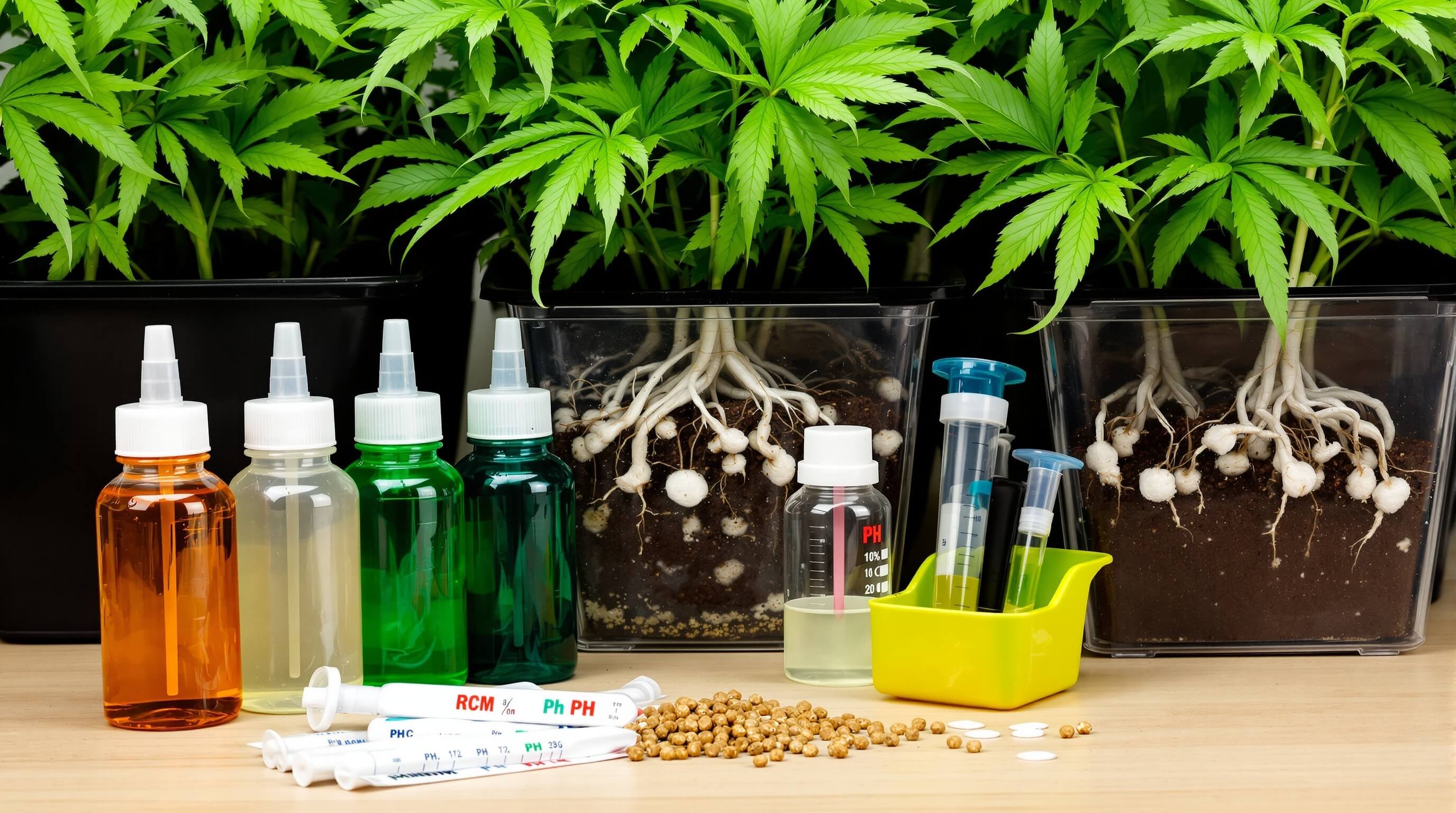
Modern cannabis cultivation demands sophisticated approaches to plant nutrition and pest control that balance optimal plant health with strict regulatory compliance. As testing requirements intensify and consumers demand cleaner products, operators must implement precision nutrient strategies and integrated pest management programs that protect both crops and business licenses.
Strategic Nutrition Programs and Cost Optimization
Cannabis nutrition has evolved far beyond basic N-P-K fertilizers to sophisticated, growth-phase-specific formulations designed for commercial cannabis production. Leading nutrient companies provide multi-part systems incorporating macro and micronutrients, humic acids, amino acids, and bioavailability enhancers tailored to cannabis uptake patterns.
The most significant cost optimization opportunity lies in nutrient delivery systems. Commercial dry nutrient salts cost 80%+ less per gallon of feed than pre-diluted liquid formulations, delivering substantial savings for large-scale operations. Two-part salt systems and complete soluble powder nutrients enable precise mixing while dramatically reducing input costs compared to bottled liquid programs.
Advanced fertigation systems monitor electrical conductivity (EC) and pH in real-time, automatically adjusting nutrient dosing to maintain target levels. This precision prevents common issues like nutrient lockout or burn while ensuring consistent plant performance across entire facilities. Chelated minerals and bioavailability enhancers maximize nutrient absorption, reducing waste and improving feed efficiency.
Biological Integration and Soil Health: Living soil cultivation and biological amendments represent emerging strategies that combine cost benefits with product differentiation opportunities. Microbial inoculants containing beneficial bacteria and mycorrhizal fungi enhance nutrient uptake naturally while potentially improving stress tolerance and terpene expression.
Many modern nutrient lines include “microbe packs” featuring Bacillus species, Trichoderma, and other beneficial microorganisms that promote root health and nutrient absorption efficiency. These biological supplements can reduce overall nutrient requirements while potentially commanding premium pricing for “living soil” or “organic-style” products.
Hybrid approaches combining mineral salt precision with organic amendments offer operational flexibility. Organic teas, seaweed extracts, and silicon supplements can induce systemic resistance while maintaining the consistent results that commercial operations require.
Integrated Pest Management and Regulatory Compliance
Cannabis pest management operates under unique regulatory constraints that make Integrated Pest Management (IPM) essential rather than optional. With states maintaining strict lists of approved pesticide active ingredients and testing labs screening for dozens of residue compounds, compliance failures can result in crop destruction, product recalls, and license suspension.
Successful IPM programs prioritize prevention through environmental controls, sanitation protocols, and early detection systems. Maintaining optimal humidity ranges discourages powdery mildew, while air filtration systems exclude pest introductions. Weekly scouting protocols train staff to identify spider mites, aphids, thrips, and disease symptoms before infestations become damaging.
Advanced monitoring technologies include AI-driven camera systems that scan sticky card traps and detect subtle leaf discoloration days before human-visible symptoms appear. Early detection prevents crop losses that can cost hundreds of thousands of dollars while reducing the need for intervention treatments.
Biological Controls and Treatment Strategies: When intervention becomes necessary, biological controls provide effective pest suppression without residue risks. Beneficial insects like ladybugs, Persimilis mites for spider mites, and parasitoid wasps for caterpillars integrate seamlessly into cultivation operations. Microbial pesticides target specific pests without harmful residues.
Many commercial operations implement regular beneficial releases as preventative measures, introducing predatory mites weekly to flowering rooms to suppress any pest pressure before it develops. This proactive approach proves more cost-effective than reactive treatments while maintaining product quality.
Chemical interventions, when necessary, rely on EPA-exempt 25(b) products including essential oils and food-grade materials, or approved substances like potassium bicarbonate, insecticidal soaps, and horticultural oils. Synthetic pesticides require careful timing and documentation, with many states mandating specific intervals between application and harvest.
Compliance and Risk Management: Because cannabis remains federally unrecognized by EPA, all pesticide use occurs off-label under state oversight. Colorado and California publish approved product lists and require comprehensive residue testing, with violations triggering recalls, fines, or license suspension.
The limited chemical arsenal makes preventative programs critical. Clean plant programs utilizing tissue culture or virus-indexed clones reduce systemic pathogen risks, while strict sanitation protocols prevent spread of emerging threats like Hop Latent Viroid (HLVd), which causes “dudding” and reduced potency.
Documentation requirements include detailed spray logs, application timing records, and product tracking to demonstrate compliance during inspections. Many operators pursue organic-equivalent certifications through programs like Clean Green Certified to differentiate products while ensuring compliance with strictest standards.
Strategic Implementation: Successful nutrient and pest management requires integrated planning that treats plant health as the foundation of both quality and compliance. Precision nutrition prevents plant stress that increases pest susceptibility, while robust IPM programs protect investments without compromising product safety.
The most successful operations balance prevention with intervention capabilities, maintaining biological control populations while keeping approved emergency treatments available. This approach protects crops while ensuring all products pass regulatory testing requirements that determine market access and brand reputation.
Automation & Data Analytics: Scaling Operations Through Technology

Modern cannabis cultivation increasingly relies on data-driven decision making and automated systems to achieve the consistency and efficiency required for profitable operations. As margins compress and competition intensifies, operators who leverage cultivation software platforms, predictive analytics, and automation technologies gain decisive advantages over those relying on traditional manual approaches.
Data Analytics and Predictive Intelligence Systems
Cultivation software platforms like AROYA, Trym, and GrowerIQ serve as digital command centers that integrate data from IoT sensors monitoring temperature, humidity, CO₂, light levels, and soil moisture. These systems provide real-time visibility and control capabilities that enable operators to manage facilities remotely and respond immediately to environmental changes that could impact crop quality or compliance.
Modern facilities deploy dozens of wireless sensors feeding data to smartphone-accessible dashboards, allowing growers to receive alerts for out-of-range conditions and take corrective action before problems develop. This proactive monitoring prevents costly crop losses while maintaining optimal growing conditions around the clock.
Artificial Intelligence and Predictive Optimization: AI-driven analytics represent the next evolution in cultivation management, moving beyond monitoring to predictive optimization that can increase profitability by 15-20%. Machine learning algorithms analyze historical grow data, sensor trends, and visual inputs from cameras to identify patterns and correlations that human observation might miss.
Yield prediction algorithms integrate strain characteristics, vegetation time, light levels, and feeding schedules to forecast final harvests weeks in advance, enabling better inventory planning and financial projections. AI systems can also predict maintenance needs and potential problems, such as detecting humidity and temperature patterns that typically precede mold outbreaks, triggering preemptive interventions.
Computer vision technology monitors plant health continuously, identifying early signs of pest damage, nutrient deficiencies, or disease symptoms through subtle color changes and leaf abnormalities before they become visible to human scouts. These early warning systems prevent minor issues from becoming major crop losses.
Data-Driven Performance Optimization: Even without advanced AI, systematic data collection enables scientific approaches to cultivation improvement. Operators track key performance indicators including grams per square foot, kilowatt-hours per pound, and water consumption per gram to identify optimization opportunities and benchmark performance.
Cultivation analytics software provides detailed reports on yield per strain and per room, cost per gram produced, and resource efficiency metrics that guide strategic decisions about strain selection, facility utilization, and operational investments. This data-driven approach proves essential as industry margins tighten and operational efficiency becomes increasingly critical for survival.
Automation Technologies and Labor Cost Reduction
Automation addresses cannabis cultivation’s labor-intensive nature while improving consistency and reducing operational costs. Automated trimming machines have become standard in commercial operations, cutting trimming labor costs by 60-80% while operating continuously with consistent results that improve product uniformity.
Modern trimming systems use computer vision and advanced blade technology to process several pounds per hour with precision that matches hand-trimming quality. Automated packaging systems weigh, fill, and label products with +/-0.1 gram accuracy, ensuring compliance while reducing costly product giveaways and eliminating packaging labor requirements.
Production Automation and Material Handling: Large-scale facilities implement conveyor systems and gantry robots for material handling, moving potted plants between growth stages and bringing plants to workers rather than requiring staff to navigate through grow rooms. Multi-tier vertical operations particularly benefit from shuttle systems that optimize workflow efficiency.
Automated nutrient mixing systems eliminate human error in fertilizer preparation while reducing labor costs by approximately 40%. These “fertigation robots” use peristaltic pumps to deliver precise nutrient concentrations based on programmed recipes, preventing mixing mistakes that could damage entire crops.
Greenhouse operations employ automated spray booms and irrigation systems that travel across growing areas, replacing manual watering and treatment applications. These systems ensure consistent coverage while freeing skilled labor for higher-value cultivation tasks.
Strategic Implementation and ROI Considerations: Automation adoption requires careful evaluation of upfront costs versus long-term savings, but the business case strengthens as labor costs rise and margins compress. Medium-to-large operations (10,000+ square feet) typically achieve positive ROI on automation investments within 12-24 months through labor savings and improved consistency.
However, successful automation requires staff training and cultural adaptation to data-driven processes. Leading operations hire data analysts and agronomists alongside traditional master growers, reflecting the industry’s evolution toward scientifically-managed cultivation.
Enterprise resource planning (ERP) integration connects cultivation data with inventory management, task scheduling, and compliance tracking systems. Some operators implement blockchain technology for immutable batch tracking, creating transparency that enhances consumer trust and regulatory compliance.
Competitive Positioning: The cannabis industry is stratifying between technology adopters and traditional operators, with data-driven facilities achieving lower production costs and more consistent quality. In mature markets where price competition intensifies, automated operations typically outperform manual facilities through superior efficiency and reduced variable costs.
While not every cultivation task can or should be automated, successful operators balance technological capabilities with human expertise. Master growers remain essential for phenotype selection, problem-solving, and responding to unexpected conditions, but they now operate with comprehensive data support and mechanical assistance.
Cultivation operations that fail to adopt modern automation and analytics risk falling behind competitors who leverage these technologies for consistent quality, operational efficiency, and cost control. The investment in cultivation technology infrastructure increasingly determines which operations thrive as the industry matures and competitive pressures intensify.
Sustainability & Climate Adaptation: Future-Proofing Operations
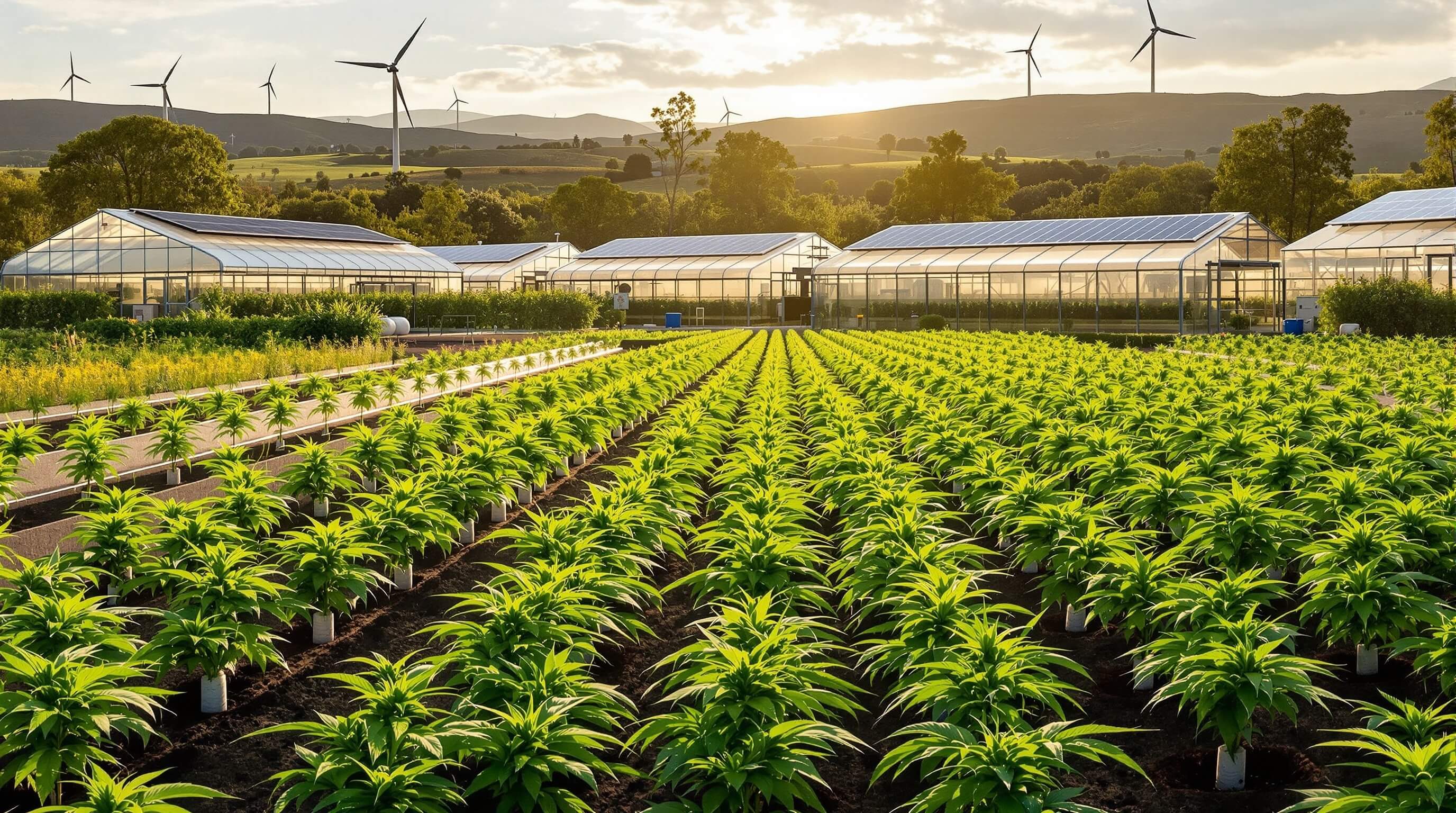
Sustainability has evolved from marketing advantage to operational necessity as energy costs rise, climate impacts intensify, and regulatory requirements expand. Cannabis cultivation’s significant environmental footprint, with indoor grows emitting 2,283–5,184 kg CO₂ per kg of dried flower, creates both compliance risks and cost reduction opportunities for operators who implement strategic sustainability initiatives.
Energy Independence and Renewable Integration Strategy
Energy costs represent cannabis cultivation’s largest controllable expense, making renewable energy integration a critical profitability strategy rather than purely environmental initiative. Indoor facilities where lighting consumes 50-70% of electricity usage achieve substantial ROI through solar installations, battery storage, and energy efficiency programs.
Solar Cannabis Company’s Massachusetts facility demonstrates the business case for energy independence. Their 5 MW solar-powered microgrid with cogeneration and battery storage reduced grid energy consumption by 40% and carbon emissions by 60%, while securing over $1 million in utility rebates for LED efficiency upgrades. As the only energy-independent cultivation facility in the U.S., they’ve insulated operations from electricity rate volatility while achieving lower operating costs than grid-dependent competitors.
Innovative Energy Strategies and Grid Participation: Forward-thinking operators participate in demand response programs that provide rebates for reducing consumption during peak grid demand periods. These programs allow facilities to temporarily adjust lighting or HVAC systems during high-demand periods, generating additional revenue while supporting grid stability.
Cogeneration systems that produce electricity and capture waste heat for facility warming plus CO₂ enrichment from combustion, maximize energy utilization efficiency. Some operations explore off-grid capabilities as backup systems, ensuring production continuity during grid outages that could destroy entire crops.
Approximately 37% of Massachusetts cannabis operators have adopted solar energy, with states like Colorado offering community solar programs that provide renewable energy access without requiring on-site installations. These programs enable smaller operators to access renewable energy benefits without substantial capital investment.
Climate Resilience and Risk Mitigation: Extreme weather events pose increasing operational risks that require strategic adaptation planning. Wildfire-prone regions demand smoke taint prevention strategies including early harvest timing and filtered hoop houses during fire events. Power outages from storms or heat waves can destroy entire indoor crops, making backup power systems essential infrastructure investments.
Greenhouse operations implement energy screens, evaporative cooling, and semi-closed designs with fogging systems to maintain optimal growing conditions during extreme heat. Advanced greenhouse designs in challenging climates like Arizona demonstrate that controlled environment agriculture can succeed even under harsh conditions through proper engineering.
Breeding programs increasingly focus on climate-adaptive genetics including heat tolerance, drought resistance, and earlier flowering varieties that avoid late-season precipitation and mold risks. This genetic adaptation strategy parallels traditional agriculture’s response to changing climate zones and growing conditions.
Sustainable Practices and Regulatory Compliance Framework
Organic and regenerative cultivation practices deliver both environmental benefits and economic advantages through reduced input costs and premium pricing opportunities. While USDA Organic certification remains unavailable for cannabis, programs like Clean Green Certified and California’s OCal provide third-party verification that commands market premiums.
Regenerative Agriculture and Cost Reduction: Leading operators like East Fork Cultivars and Aster Farms demonstrate how regenerative techniques create closed-loop systems that reduce operating costs while improving soil health. Cover cropping, minimal tillage, and on-site composting strategies reduce external input dependencies while building operational resilience.
Aster Farms saves approximately $8,000 annually by composting cannabis waste on-site rather than purchasing external compost. Their regenerative approach provided crucial supply chain resilience when fertilizer prices spiked, enabling full acreage planting while input-dependent competitors faced shortages.
These practices extend beyond cost savings to supply chain risk mitigation. Operators using regenerative techniques report fewer pest issues due to healthier ecosystems and reduced reliance on external inputs that face price volatility and availability constraints.
Regulatory Reporting and Carbon Tracking: Massachusetts now requires licensed cultivators to track and report energy and water usage through PowerScore tools as part of license renewal requirements, establishing precedent for mandatory sustainability reporting. Colorado data showing indoor cultivation accounts for 1.3% of state electricity usage demonstrates the regulatory attention cannabis energy consumption attracts.
Industry organizations like the Sustainable Cannabis Coalition and Resource Innovation Institute develop benchmarking standards that help operators compare performance and identify improvement opportunities. These standards will likely influence future regulatory requirements as states integrate climate goals into cannabis oversight.
Strategic Implementation Examples: Different operational models demonstrate various approaches to sustainable cultivation:
Indoor operations like Solar Cannabis Company prove that even energy-intensive facilities can achieve sustainability through renewable energy integration and efficient design. Their microgrid approach provides both environmental benefits and operational cost advantages.
Greenhouse facilities like Glass House Brands’ 5.5 million square foot operation leverage coastal sunlight with supplemental LEDs to dramatically reduce energy consumption per pound compared to indoor equivalents while implementing comprehensive water recapture and integrated pest management systems.
Outdoor regenerative operations such as Aster Farms combine sun-grown cultivation with dry-farming techniques and zero synthetic inputs, achieving organic premiums while building climate resilience through diversified genetics and distributed growing areas.
Waste Management and Circular Economy: Comprehensive sustainability strategies address cultivation waste streams including plant material, plastic containers, and packaging waste. Leading operations reduce plastic waste through reusable fabric pots and bulk nutrient purchasing while maximizing on-site composting of organic waste.
Future Regulatory and Market Signals: Rising energy costs and potential carbon pricing could dramatically impact cultivation economics, making energy efficiency and renewable integration crucial for long-term viability. Federal rescheduling might enable cannabis operations to access USDA renewable energy grants available to other agricultural operations.
Consumer and investor attention to environmental practices increasingly influences brand value and market access. Early movers in sustainability establish competitive advantages through both cost reduction and market differentiation that become increasingly valuable as environmental consciousness grows.
Sustainable cultivation practices represent strategic business investments rather than optional environmental initiatives. Operators who integrate energy efficiency, renewable energy, water conservation, and waste reduction into their business models achieve lower operating costs, regulatory compliance, and market positioning advantages essential for long-term success.
